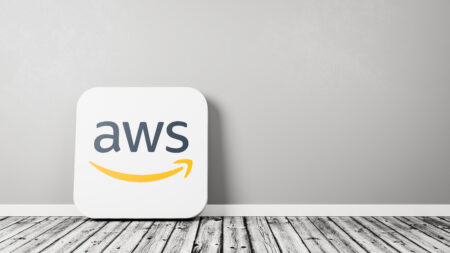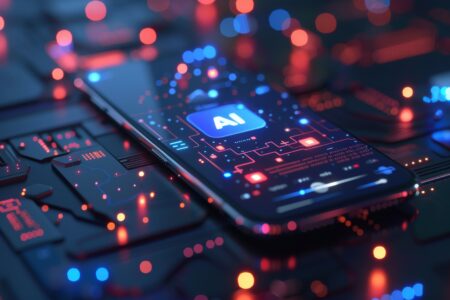Written by Bill Doerrfeld
Gartner predicts that by 2024, low-code will be responsible for 65% of overall application development activity. It appears that today’s low-code/no-code technologies are on a high-speed trajectory to enable the next generation of citizen developers. Of these technologies, the most visual and text-driven generators, the no-code tools, could open up impressive possibilities for the entire digital workforce.
But what will the future of no-code hold? Well, for one, it seems these platforms are set to proliferate throughout enterprises. By 2024, 75% of large enterprises will be using at least four low-code development tools, predicts Gartner. These platforms will also likely become more AI-driven, analyzing developer hangups and predicting solutions with better accuracy. Since 40% of companies state AI technologies and expertise are too expensive, as reports Deloitte, low-code/no-code could provide a more cost-effective doorway to machine learning.
However, there will be hurdles along the yellow brick road to no-code. These include security and governance concerns and training citizen developers on best practices. Market competition could introduce a confusing multi-tool condition, as there are roughly 131 low-code platforms at the time of writing. Furthermore, ensuring longevity for low-code/no-code creations will require ongoing maintenance.
In this article, we peer into the crystal ball of the burgeoning no-code sphere with David Adkins, co-founder of Adalo. I recently interviewed Adkins on the future of no-code. In short, Adkins certainly foresees systems thinking becoming a more common competency in the near future and cites a swath of untapped use cases for no-code. “It’s really time for people to start thinking about apps in a whole new way,” says Adkins. He also foresees the no-code revolution opening a whole new industry of freelance app dev agencies, similar to the web design shop boom of the previous decades.
I’ve included Adkins’s full responses below, as they’re full of on-the-ground insights. Read on for his thoughtful perspective on the immediate future of no-code.
What is the state of no-code?
The history of no-code is all about allowing people that don’t know how to code to create solutions to problems that previously required you to be technical to solve. So it started actually back with spreadsheets and then moved to things like simple templated websites to more complicated custom websites and eCommerce to now where we are today: applications.
Where is the future of no-code heading?
So, at a very high level, it will continue to evolve to what’s always done by some of the most skilled developers, like working on very large SaaS products or working with AI and VR. Eventually, things will naturally go that direction, although it’s important to note that there’s a way to go there, and that’s more super high-level future thinking.
In terms of where it’s heading in the next five years, it’s all about how we can allow anyone to create more and more customized applications for specific problems that they’re experiencing — either in the world as a startup, at a local business as a custom app to better connect with their clients, or at an enterprise as a better way to engage with their community and manage internal processes.
It’s really time for people to start thinking about apps in a whole new way. Instead of only thinking about them as large social media types of things, we’re all going to start seeing them solve more specific problems for different communities and businesses.
Do you believe that app development will become a common competency? (As suggested here)
Yes, absolutely, or at the very least, systems thinking will become more commonplace. There’s a skill associated with understanding how to take a process and productize it, and I believe that will also become very common. These aren’t just skills that should be reserved for “coders,” though. Breaking down that tower of knowledge will only enable more thoughtful work from non-technical people.
What issues do you foresee arising as no-code apps flourish and require maintenance into the future? How will these concerns be mitigated?
I think what we’re already starting to see with no-code apps is people pushing the limits on what’s possible. For us, a lot of 2020 was asking ourselves, ‘how can we make sure that you’re not stuck and that it’s possible to do what you want on Adalo?’ And that required a lot of very thoughtful, powerful upgrades.
I stress the word thoughtful here because, for us, the best no-code platform has to be both simple and powerful. This means you’ve got to add those powerful features in ways that are a little more behind the scenes so that when makers are beginning their app-building journey, they aren’t overwhelmed with technical details, but when they need to add something more powerful, they can.
This is how we see code and no-code playing well together. The less technically minded makers are building, and the technically minded developers can add back into the system when they get stuck. So everyone’s truly building together.
In terms of future issues, as we keep pushing the envelope, these are all things that software teams today run into — versioning, teams working collaboratively together, getting the necessary infrastructure needed to scale your databases, and the ability to integrate with new software. It’s time for us as an industry to take no-code to the next level by tackling these issues.
What are some favorite no-code use cases or stories you have?
My favorite stories are always from our makers that are dipping their toes into the no-code space for the first time. They have this idea and are seriously considering hiring a developer for thousands of dollars, stumble into no-code, and then on the first day of creating, they end up with a working prototype. Their excitement and passion are contagious. Our tool is only one piece of the no-code puzzle. When these same people then go and learn about other parts of the no-code space, like automation or websites, there’s a lightbulb moment, and then a whole new world of potential opens up — no-code feels truly limitless for these makers.
No-code is also known to help organizations move fast, and a great example of that is the pandemic. Businesses were flipped on their head almost overnight and had to adjust the way they did business — no-code filled the gap here and, what’s more, proved effective.
What sort of future use cases or untapped potentials do you foresee?
In terms of future use cases or untapped potential, there are two areas in particular that I believe have the most to gain from no-code: businesses and agencies. The same shift that happened with creating websites will occur in the app space, where a whole new type of freelancer is created. Learning these skills now and adding them to a freelancer’s stack is very advantageous. We see this now — more people are asking for apps than people who have the skillset to create apps.
For businesses and organizations, there are several departments outside of the technology-focused teams that have workflows that could benefit from automation or app creation. Historically, these businesses wouldn’t have the funds to outsource this work, but now they don’t have to. We’ve seen marketing, community, and sales teams create their own solutions, and when teams buy into no-code solutions, a lot of potential is unlocked.
So far, the no-code realm seems pretty proprietary. Do you foresee any inter-vendor standards arising in the no-code space?
Love this question! I have been playing around with the thought of this for some time now. It’s similar to having standards around spreadsheets so that Excel, Google Sheets, and Pages can play well together. But then I also think about how design tools don’t really play nicely together. An Adobe Illustrator file doesn’t really work anywhere else. There are some standards around SVGs so that you can open other things in Illustrator. And then, you can export a Procreate file to Photoshop. But what about Canva?
So my thoughts get clouded and messy there when it comes to truly standardizing and coming up with, let’s say, a no-code file type. It would be awesome! But at the moment, the platforms are all a little too young, and we’re all working on things a little differently, so I’m not sure how likely that will happen in the near term.
In the end, when no-code apps become as commonly used as spreadsheets, I do think that there’s at least a chance of some standardization to move between platforms. The collaborative community builder in me wants to give this a higher chance, but I can’t at the moment.
Could no-code play a role in encouraging diversity and other viewpoints to join the development journey?
Absolutely, and it already does. Traditional development has historically been an elite club, and quite frankly, coding, in particular, takes a specific skill set that not everyone has. Not possessing this skillset shouldn’t prohibit someone from creating great solutions — and that’s what no-code allows.
The best solutions come from people that experience the problem themselves, or a group of people from different backgrounds solving the same problem from different vantage points. It is limiting to think that because developers have the skillset of coding, they can also create the best solution. No-code levels the playing field and opens doors for people with different lenses to solve their own problems. It’s inspiring.
Beyond that, it also comes down to sheer resources — it is much more cost-effective to use tools like Zapier, Adalo, or Webflow than it does to go to a development school. That means people from all over the world are now able to do things they’ve previously been barred from doing simply because they can afford it.
The No-Code Prophecy
Low-code/no-code is forecasted to grow at a fast pace — 31.1% CAGR from 2020–2030. These visual and text-driven platforms will continue to democratize coding through usable abstraction layers in the years ahead.
To summarize Adkins’s main predictions:
- More problem solvers will create apps using no-code than ever before.
- As a result, systems thinking will become a typical competency.
- No-code will particularly accelerate app dev agencies, similar to how website developer shops grew over the last few decades.
- No-code platforms must continue to evolve, but do so in a way that hides complexity from end-user.
- Prospects look grim for any cross-vendor no-code standardization. Don’t expect a universal “no-code file type” anytime soon!
A recent Adalo study also makes some interesting conclusions on the future of no-code. 20% of respondents felt that no-code skills will become as common as making a Powerpoint presentation in three years. Their timeline also predicts no-code courses being offered in major universities by 2025 and a first product built with no-code IP-ing in 2026.






